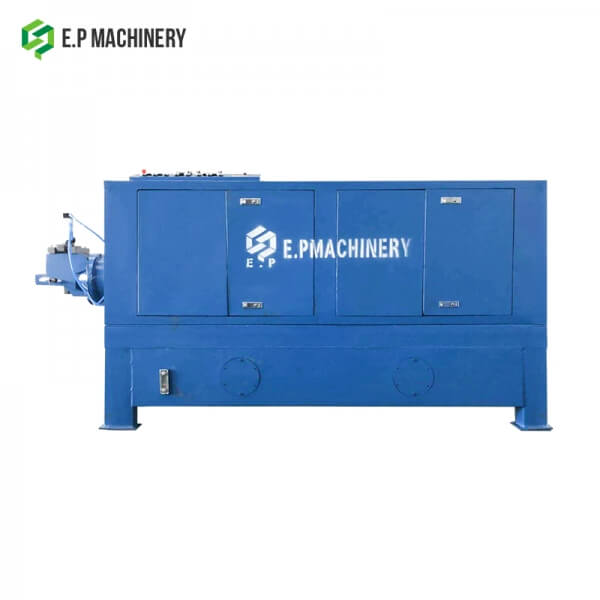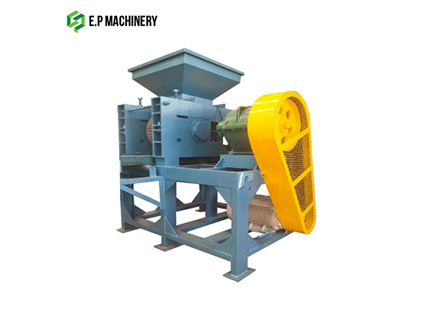Different types of briquetting machines have different working principles, which work under different pressures and are suitable for different materials. So how do they work differently? What are their advantages and disadvantages? Let's pay attention to this article
Contents
What is a briquette machine
A briquette machine is used to turn the waste powder into a regular shape block, which can help to improve the conditions for those powder, make them easy for transportation, storage, and more useful for further usage.
The briquette system is able to deal with all kinds of materials under suitable sizes and moisture.
Briquetting work always takes place with the binder as the raw particles need the binding effect to get enough strength when they are turned to briquette. Biomass and industrial waste are sometimes different from each other when briquetting due to the binder source they are using.
Types of briquette machines and how they work
Screw type
The screw type briquette machine uses the auger to press the raw material, with different materials, it can be equipped with or without the heating system.
The heating system is a special design for those briquetters deal with materials contain lignin or any material that significantly improve plasticity under high temperature. Lignin is a material alway can be found on biomass but need high temperature to improve its performance. So the heating system is usually used for biomass briquetting. Other materials like coal, charcoal, etc. binders are always needed when briquetting with the screw type briquette machine due to their poor plasticity.

When making briquette from a screw briquetter, the suitable material will be first fed to the hopper and then conveyed by the screw inside the briquette machine. Then the rotating screw takes the material from the feed port, and compacts it against a die which assists the build-up of a pressure gradient along the screw.
Finished briquette output from the end like a stick. Normal cross-section shapes we usually find can be square, round, plum blossom, etc.
As the screw briquette machine works with a pressure not that high, binders are always needed forming the briquette. Equip with a heating system will help the biomass material melt the internal lignin and turn it to a high-performance binder. Besides, other materials also work with this briquetter like coal, charcoal, etc. These materials should be well mixed with the binder to get the briquette forms.

different screws
Examples:
Charcoal Briquette Extruder Machine
Hydraulic type
The hydraulic type works with a hydraulic pump station which supplies a very big pressure. Because of its high pressure, almost all the materials can be briquette with this system.
Metal, as a raw material that reflects plasticity under high pressure, is specially suitable to be briquette by the hydraulic type briquette machine.

The briquette working process is in a chamber where materials are fed into, there materials are briquetting under a very high pressure. It causes their plasticity and makes them binding stably together as a block.
Hydraulic type takes a long pressure keeping time on the briquette compare to other types, Let more elastic deformation be transformed into plastic deformation. Elastic deformation is an unstable deformation. After the pressure is relaxed, the density of the briquette gradually decreases due to its existence. Transforming the deformation can improve the quality of the briquette to a certain extent. On the other hand, the longer heat generated by briquetting keeps the bonding of the lignin more stable. That makes the briquetting performance better and as well as the quality of briquette.
Examples:
Wood sawdust charcoal briquette machine / Biomass briquette making machine
Piston type
The piston type uses the rotary power of the mechanical device or the thrust of the hydraulic cylinder to reciprocate the piston (or the plunger), and the piston (or plunger) drives the ram to reciprocate in the forming sleeve to generate a pressing force to form the material to briquette.

A big pressure will be generated as the movement of the flywheel and punch the briquette time after time in a short time, it raises the temperature of the raw material. As the raw material moves, it fractionates with the inside, another kind of heat – friction heat generates. With the action of these two kinds of heat, material raises its own temperature to a high level and melt the lignin. Particle materials then bind together and become strong enough.
The honeycomb briquette machine is a simple type of piston briquette machine, it uses the wheel as well but briquette only punched once to form.
Examples:
Honeycomb briquette machine | Punching Type Coal/charcoal Briquette Machine
Roller Type
Roller press works with two close rotating rollers at the same speed but with opposite direction. The two rollers, with the same width and diameter, have holes on the surface. When they move, the same two holes on the different roller will coincide at the intersection of the midline and the briquette will be pressed there.

With different pressure requirement, roller press can be designed to several types.
A normal roller press will use a wedge iron or a spring to fix the movable roller as it works on a low pressure. The hydraulic pump station also can be used to fix the roller and supplies a much bigger but flexible support to the roller to work stable under high pressures.
Examples:
High Pressure Roll Briquette Machine Hydraulic Pressure Roll Briquette Machine Mechanical Pressure Roll Briquette Machine
With the consideration of investment and facility requirement, choose the right type will help to make the briquette business much efficient and make briquette with high quality.












